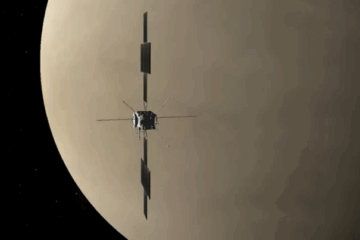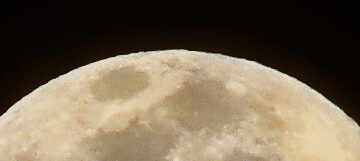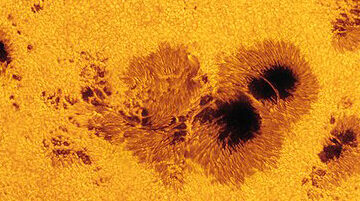Webb tries to untie a knotty problem
An unusual planetary nebula may be hiding more than we can see
The discoverer of Uranus, William Herschel (1738–1822), was interested in whatever kinds of objects he could see through his ever larger-and-larger telescopes. When the German-British amateur astronomer realized that the fuzzy round objects thought to be solid planets were actually round-shaped clouds of gas now known as planetary nebulae, he had accidentally found one of the evolutionary stages in the lives of some kinds of stars.
In spite of the fact stars are large glowing balls of extremely hot gasses, they follow a sequence of developments similar to what happens to we humans throughout our lives. We are born, mature, and eventually die, and it’s the same with them too.
They originally form in a cloud of gas and dust,, a nebula, evolve to maturity as they use up their nuclear fuel, and then they too “die,” though how it happens very much depends on how much material they originally had when they started out.
Smaller stars with enough gas and dust to actually ignite and become stars live very long, though very low-temperature, lives. Medium-weight, medium-temperature stars, like our own Sun, are around for about 10 billion years before they have used up all of their fuel and end. The most massive stars of all only last for millions of years, can be very hot, and end their lives in massive explosions, supernovae, scattering remnant material throughout their galaxy.
The James Webb Space Telescope (JWST) has turned its giant mirror on a planetary nebula with the designation of NGC 6072 in the well-known summer constellation of Scorpius, the Scorpion. By coincidence, it was first discovered by Herschel’s own astronomer son, John (1792–1871), in 1837.
This particular planetary nebula is of interest due to its very complex internal structure, which sets it apart from others of this type of object.
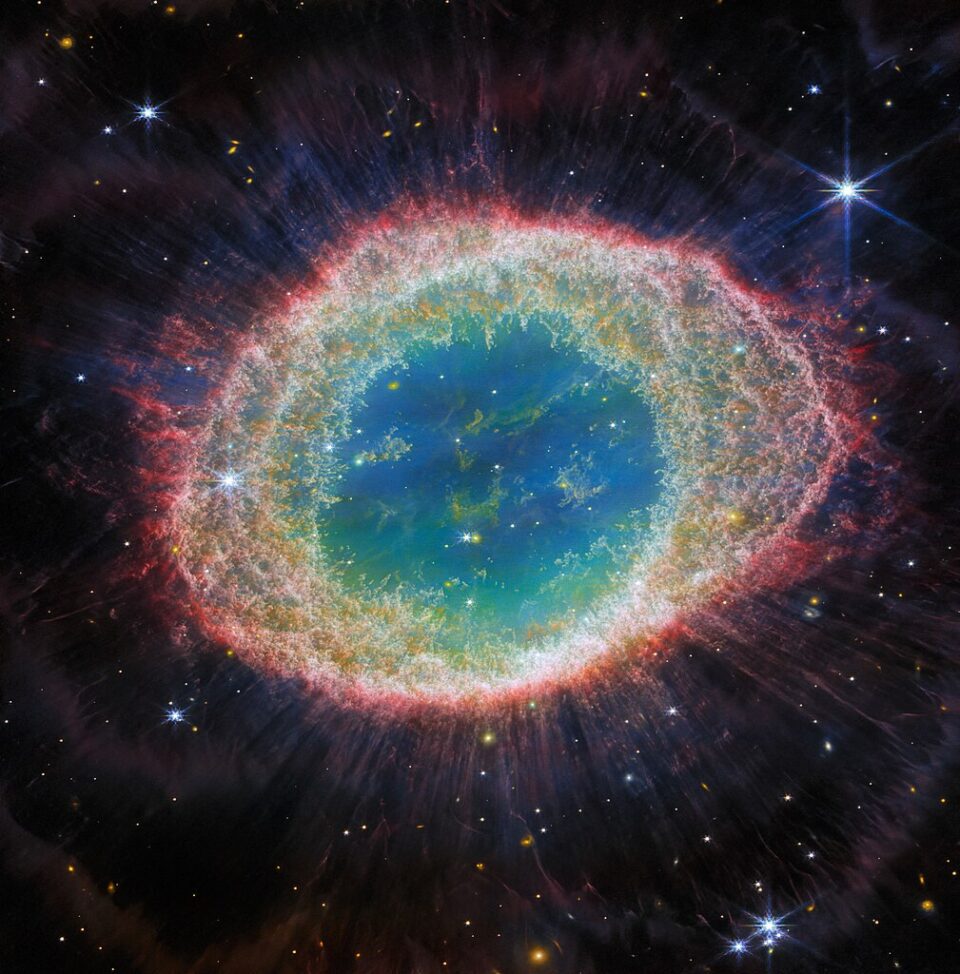
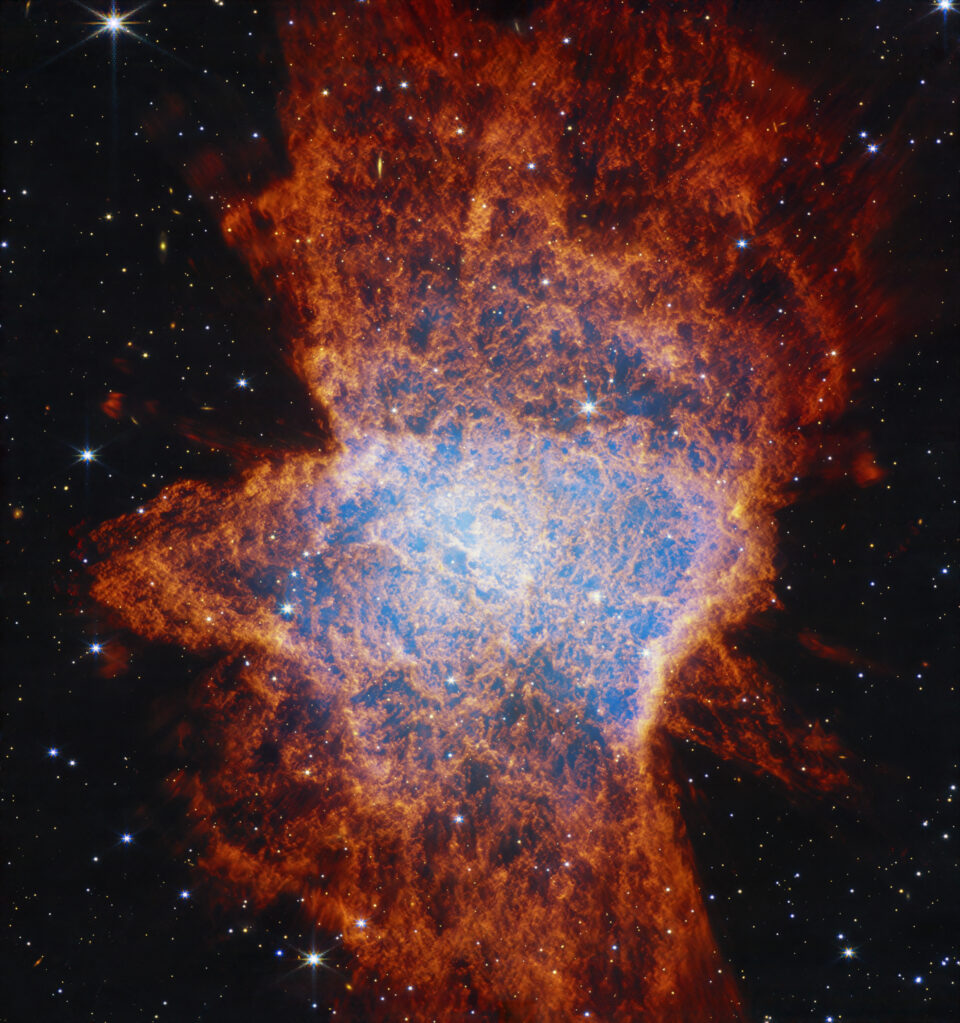
To the left we see a JWST image of M 57, better known as the Ring Nebula – for obvious reasons. This well-known planetary nebula, located in the constellation of Lyra, is a typical example of what these objects look like. Under the right conditions of a very dark sky, it can just be seen with a pair of binoculars as a fuzzy gray-green spot of light. It doesn’t take much imagination to believe this is a bubble of material blown off of a dying star. The edges look like a more solid ring only because we are looking through more of it. In essence, it’s a little like looking at a soap bubble hanging in the air.
NGC 6072, however, is anything but typical. In JWST’s near-infrared images, its interior looks far more intricate than that of the Ring Nebula. It seems to have more than one pole, which means it is made up of more than one expanding sphere of expanding gases having different orientations. Long thought to be a binary, or two-star, system it now really looks like there is one star orbiting the central, older star. This interferes with how the dying one is ejecting its outer layers away into space.
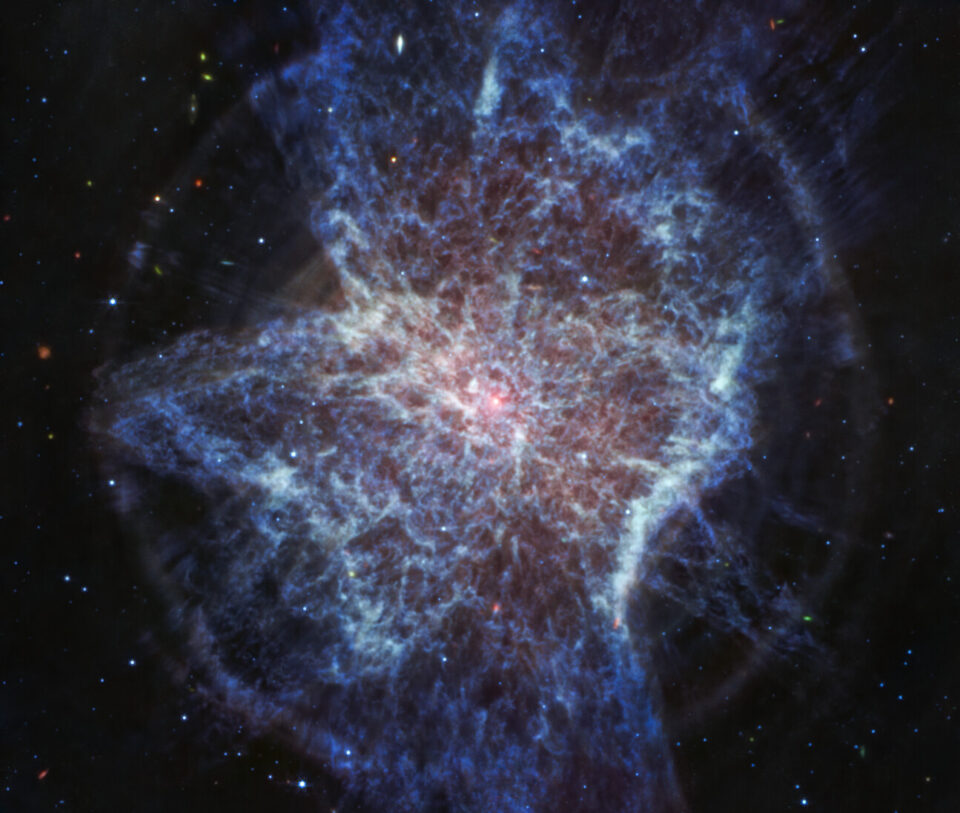
This JWST image of NGC 6072 looks similar to the one before it, though it’s been made in the mid-infrared part of the spectrum. If you look carefully, you can see some of the same structures in both pictures. Astronomers believe that the pinkish-colored star in the middle of this image is the one which is dying. Some of the noticeable differences between the two NGC 6072 pictures are because the longer wavelengths of this part of the infrared spectrum seen in this image emphasize the now warmed dust being cast off by this central star along with the gas.
As these shells are being blown off of the older star one-at-a-time, the second orbiting star is disturbing them, leading to the complex structures seen.
Why is it so important that we understand as much as we can about planetary nebula? Because in about 4½ billion years our own Sun will become one. After it has exhausted its nuclear fuel, our star will expand into a red giant. It will then shed its outer layers to form the beautiful, colorful ring of a planetary nebula. At the same time, the Sun’s exposed, hot core will shrink, becoming a white dwarf star. It will be the ultraviolet radiation from this leftover object, which will illuminate the ejected material, causing it to glow.
For more information about Webb’s observations of NGC 6072, including additional images and a video, follow this link.
By: Tom Callen

